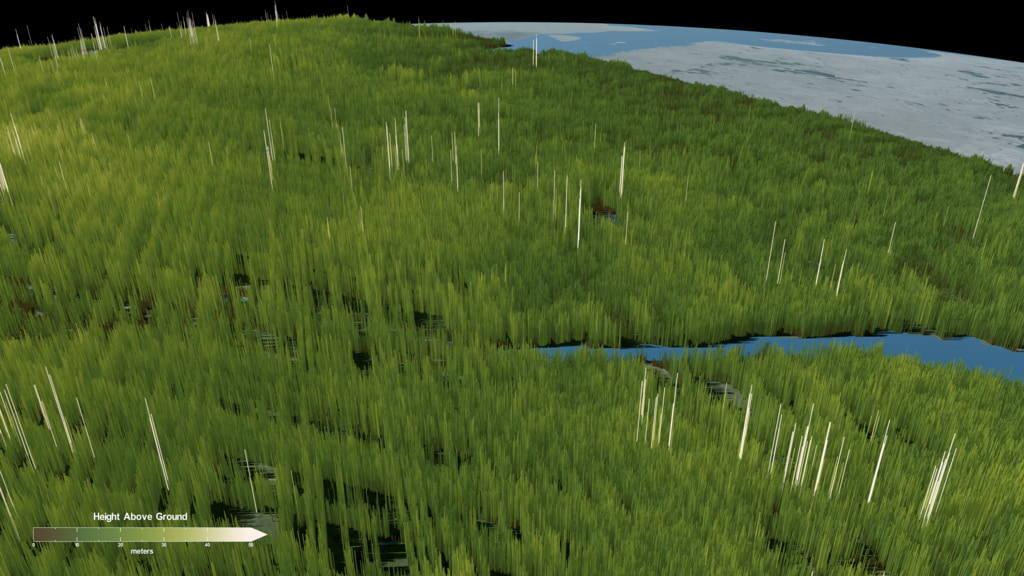NASA’s GEDI satellite has been studying tropical jungles since 2018, “firing” them with laser beams. Thanks to this, it collects spatial information about the forest canopy. Scientists who work with it have recently discovered that the vegetation in these places is a little different from what they used to think about it.

GEDI spacecraft explores the rainforest
Scientists continue to use spacecraft to explore the Earth’s biosphere and the processes that occur in it. Previously, spacecraft have already investigated how the wetlands and rivers have changed over the past few decades. And in order to track beaver dams in North America, scientists even used artificial intelligence.
Now it’s the turn of the rainforests. More precisely, NASA’s GEDI spacecraft has been investigating them since 2018. It is equipped with a laser, which constantly “fires” the thickets under it. The radiation partially passes through the foliage, but eventually it is reflected back and picked up by the receiver on the spacecraft, notifying it of what is under its canopy.
And there is, according to the prevailing ideas, quite a lot. According to early researchers, there is no empty space there at a height of several tens of meters, and the animal world forms several tiers: the upper thick, the lower thick and the thin middle between them.
However, it was established only for individual, well-studied areas of the forest. A global study could be carried out by satellites, but those that work in the optical range cannot see through the crowns of trees. And it was at this moment that GEDI came to the rescue.
Thanks to the use of this satellite, it was possible to explore huge areas of the rainforest, which cover 80 percent of its territory in the Amazon and 70 in Central Africa.
Research results
The results of the study published recently by scientists are somewhat unexpected. GEDI showed that the forest canopy was significantly less divided into tiers than previously thought. And the maximum density of the forest is at a height of 15 m, while higher plants are much rarer.
This discovery strongly contradicts earlier ideas about how rainforests are arranged. After all, scientists believed that the bulk of the leaves in them are in the tops, where solid crowns form, which form a solid thick layer. Now, thanks to the GEDI satellite, these ideas will have to be revised.
Another interesting conclusion that scientists have made is that in cases where conditions differ from optimal, the rainforest changes dramatically. This is usually due to the temperature or chemical composition of the soil. In these cases, instead of tall trees with dense foliage, scientists saw much lower thickets that were completely devoid of any division into tiers.
According to phys.org
Follow us on Twitter to get the most interesting space news in time
https://twitter.com/ust_magazine
